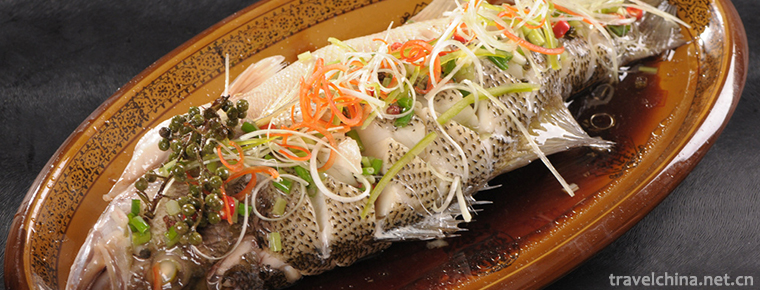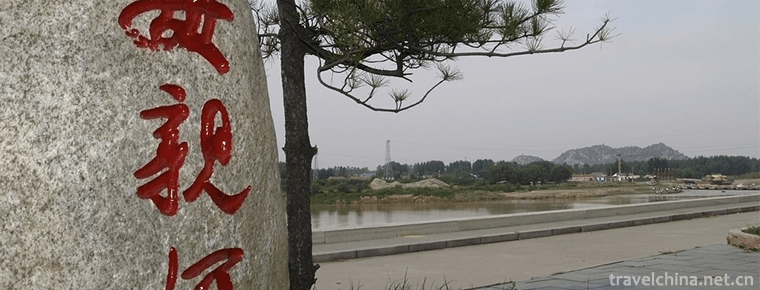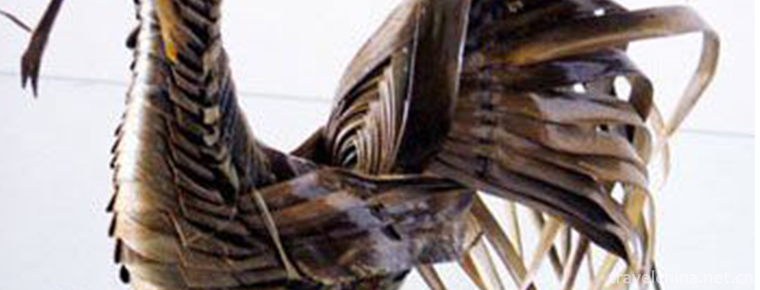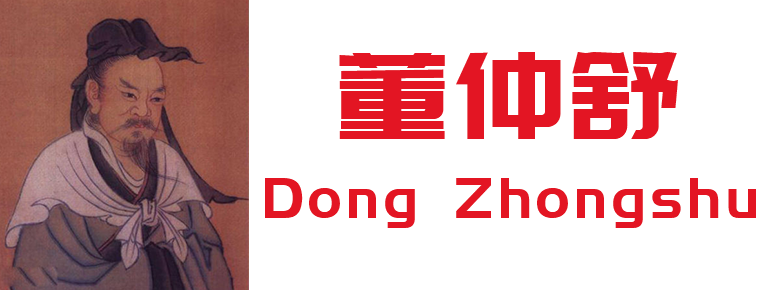Lao Leshan Tourist Scenic Spot
Lao Leshan Tourist Scenic Spot
Lao Leshan is located in the south of Henan Province, 9 kilometers southwest of Zhumadian City and 8 kilometers west of Queshan County. National Highway 107, Xinyang Highway, Beijing-Guangzhou High-speed Railway and Beijing-Hong Kong-Macao High-speed are in the meantime with fast and convenient traffic.
Lao Leshan is an ecological home, which can be regarded as the best habitat for health preservation. The whole mountain range is hilly, rolling, rich in natural ecological species, green and verdant all over the mountains. The main peak of Laolaishan is 813 meters above sea level and 68 square kilometers around. It is a National Forest Park and a famous provincial tourist resort. The negative oxygen ion content in the scenic area is 150 times higher than that in the urban area per cubic centimeter, which is the natural oxygen bar for health and leisure vacation.
This is a holy mountain of Taoism and also a blessed place for Taoists. Historically, Taoist buildings represented by "Eight Palaces, Two Views and One Baitai" surrounded the Old Peak of Leshan like many stars and arched moons. They were magnificent, magnificent and magnificent. They drew pilgrims from far and near to climb high to pray for blessings.
Lao Leshan Tourist Scenic Spot will focus on the development of eco-tourism, build an all-round eco-tourism complex, and strive to build Lao Leshan into a well-known leisure resort and provincial first-class eco-tourism demonstration area.
Historical evolution
Leshan was called Longling Mountain in ancient times, changed to Longshan in Sui Dynasty, and changed to Leshan in the fifth year of Song Daxiangfu (1012 AD) because of avoiding the taboo of Zhao Xuanlang.
Leshan is called a famous Taoist mountain in Central Plains mainly because of its long history and large scale. According to historical records, Leshan had built Taoism in Sui and Tang Dynasties, and reached its peak in the Northern Song Dynasty, with the construction of "Eight Palaces, Two Views and One Baitai" (i.e. Longevity Palace, Yuzhen Palace, Xuandu Palace, Nanhai Palace, Dou Mother Palace, Lingying Palace, Yuxu Palace, Zixiao Palace, Jilong Guan, Qunxian Guan, Baitai Palace). Zixiao Palace on the top of Leshan Mountain once had three bronze statues of Jade Emperor, Yuanshi Tianzun and Taishang Laojun. Each bronze statue was inscribed with the words "Three years of Chongning in the Great Song Dynasty, weighing 30,000 kilograms". From this, we can see the magnificence of Leshan Taoism. Unfortunately, these three statues were destroyed in the early liberation period, leaving a historical regret.
In the Northern Song Dynasty, Huizong of the Song Dynasty, who advocated Channelism, once bestowed three times on the ancestors of Leshan, "First feuded Chongren Hou, then feuded Ren Yonggong, and then feuded King Jiaji, and built temples to worship gods for a long time." This passage is written by Jin Dynasty people only 80 years from the Northern Song Dynasty, so it should be true and credible. The emperor sealed it up and the incense was strong. Leshan had become a well-known Taoist mountain at that time. Wudang Mountain in Hubei (Jinding is called Jinding because of the overlying of the ancestor's palace) and Tongshan in Biyang (Tongding is called Tongding because of the overlying of the ancestor's palace) are also called the three holy mountains of Taoism in Central Plains. Because the temple of Leshan ancestors is covered with iron tiles, it is famous for its iron roof. Ancient Leshan Taoism had a great influence. At its peak, the annual temple fair lasted from the beginning of March to the end of the month. Not only are there many pilgrims in Henan prefectures and counties, but also in the surrounding provinces of Anhui, Hubei, Jiangsu and Zhejiang, there are many pilgrims, even forming a pilgrimage meeting. Dozens of people and hundreds of people come together to climb mountains to pray and ask questions. According to Leshan Taoist priests'narrative records, when they climbed Leshan Mountain and looked around, the people facing the mountain were all over the country and belonged to Tao. Every day, people from other parts of the country live in the mountains. On the first and fifteenth day of the first lunar month, especially on the ninth day of the first lunar month (the birthday of the Jade Emperor), the fifteenth day of the first lunar month (the birthday of Tianguan), the fifteenth day of February (the birthday of Laojun), and the third day of March (the birthday of the Queen Mother) and other important Taoist celebrations, sacrificial activities are held. Taoist music and the "Tiehua" originated from Leshan Taoism, as well as the original Yinxi Fall-Child Book of Leshan Taoists, are both respected by the government and loved by the people.
In the late Ming Dynasty, Li Zicheng withdrew from Beijing westward with Emperor Chongzhen's Prince Zhu Cixian. After being blocked by the Qing army, Zhu Cixian fled to the south-west of Henan Province in disorder and hid in disguise as a Taoist priest. In case that he left behind, Zhu Cifeng sent his minister, Jia Shanghuan, to Leshan to open up a new hiding place. Jia Shanghuan claimed to be the founder of Taoism in Leshan because of his prince's dependence, and ignored the Taoism established in previous dynasties. Jia Shanghuan, a "Taoist" minister in Western Henan, became the so-called Jia Shanghuan in Leshan. The former, the emperor's prince, the returner, and the Hui also contain the implied meaning of the prince here. Of course, this is just one of the legends. Jia Shang also claimed to be the founder of Taoism, and the most prosperous meaning of Leshan Taoism.
In addition to the famous "Eight Palaces, Two Views and One Baitai", there are also mountain gates, South Tianmen Gate, Tianmen Street, Lingguan Hall, Immortal Hall, Guangsheng Temple, Baogong Temple, Notre Dame Hall (commonly known as the Temple of Sending the Son and the Maiden), Erlong Palace, Chen Ping Temple, Temple of Wealth, Mountain Temple and so on. Every temple, temple and building has a story, and every pavilion and pavilion landscape has a legend. Taking Leshan as the center, the ancient Queshan Taoist atmosphere is strong. There are Yong Gong Palace on the north shore of the North San Li River in the county town. There are Jin Le Palace outside the west of the city. There are Temple of fire in the east of the city. There are Chaoyang views across the mountains. There are Tianqi temple in the south of the city, there are eight temple in the north of the city, and there are Town God's Temple in the city. According to county records, there were still 30 Taoist temples in the whole county by the end of the Qing Dynasty, all of which belonged to the temples of Taoists in Leshan. At the same time, Leshan Taoist priests also run schools under the mountains. They teach four books, five classics, Taoist doctrines and various martial arts by setting up two disciplines of literature and martial arts. Most of the students are poor children and Taoist disciples around Leshan and in the counties. This shows the grandeur of Leshan Taoism in that year. It is said that many ancient monuments above Ming and Qing Dynasties were destroyed many times in Leshan before, but now they are hard to find. For example, Xuandu Palace and other places left only ruins, which makes people recall the prosperity of that year. Even the written records can only be traced back to the Northern Song Dynasty. As for the Hedynasty and Hedynasty in which Leshan Taoism began earlier, further research is needed.
According to Chapter 2 of "Religion" in Chapter 2 of "Daoism" in Chapter 20 of "Records of Queshan County": in the late Eastern Han Dynasty, Taoism spread to Queshan. At that time, the Yellow Towel Army was active in the county, and many peasants entered the "Taiping Road". After that, Taoism flourished and declined. At the end of the Northern Song Dynasty, the society was in turmoil, and many people tended to live in the mountains and forests to avoid the world. At that time, Cao Xiang, Wei Zhu, He Channel, Xia Houchong and others formed a five-character poem near Beiquan: "When there is ambition and fame, the elder cannot stand." Xu is planning for Lin Quanshu, who is eager to travel." They can express their Taoist mentality. During the Ming and Qing Dynasties, Taoism flourished in Mount Qushan. In the early Qing Dynasty, Taoist priest Jia Shanghuan advocated the concept of Taoism in Leshan. At that time, there were Xuandu Palace, Nanhai Palace, Yuxu Palace, Zixiao Palace, Lingying Palace, Dou Mother Palace, Wanshou Palace, Yuzhen Palace, Qunxian Guan, Huilong Guan and Baitai, which were called "Eight Palaces, Two Views and One Baitai". Leshan has become a dense area of the view of Taoism. Later, from the seventh generation to Taoist priest Lan Chongyu, more than 30 Xuandi temples, Laojun temples, Sanxian temples, Yongan Palace and Jinle Palace all over the county were under their control. In the 33 years of Guangxu, he was appointed Prince Ann of Taoist priest as the Taoist priest's congregation and took charge of Taoism in the county. During the period of the Republic of China, most of the farmland houses in Taoist temples were occupied by schools, but a few Taoists remained in Leshan and other places. Since the founding of New China, religious reforms have been carried out. Taoist monks in Leshan took the collection of Chinese herbal medicines as their profession, and also served as forest rangers and participated in productive labor.
geographical position
Traffic Route: Navigation Search Destination Lao Leshan South Gate
High-speed route: Beijing-Hong Kong-Macao Expressway Jiaotong Expressway Turn to Xinyang Expressway True Shanxi Station (Wagang) exit along the scenic area sign, left or right can reach Laoleshan scenic area.
Urban route: Zhumadian City - 107 National Highway - along S334 Provincial Highway to the scenic spot
Famous scenic spot
Music Fountain Square of "Yue" Zimen is a seal word "Yue". The name of the mountain is marked. The whole mountain gate takes the main peak of Leshan as the background. The word "mountain" has been extended on both sides. The shape highlights the word "Leshan". At the same time, it also highlights the thick, upright and simple of the mountain gate, which symbolizes the long history and profound culture of Old Leshan. Look at the three red beams in the middle of the mountain gate. We know that red represents wood, wood represents softness, and the whole mountain gate is made of stone. Stone represents steel, hard, and the Taoist culture of "steel and softness" in Lao Leshan. Meanwhile, it implies Taoist's happiness. Secondly, the upper part of the Mountain Gate resembles the crown of Tang, Song and Ming dynasties, and symbolizes the Taoist tripod of Leshan in Tang, Song and Ming dynasties. Sheng, especially in Song Dynasty, Zhengzong seized Leshan three times, first as Chongren Hou, then Ren Yonggong, and then King Jiaji. He was also known as the Three Mountains of Taoism in Central Plains, together with Wudang Mountain in Hubei Province and Tongshan Mountain in Biyang at that time. So there are folk "Wangjinding (Wudang Mountain), Mulan (Tongshan Mountain), and the practice is still in Lao Leshan". Thirdly, 108 Dragons of different shapes are carved on the mountain gates, and the two sides of the central gate are carved with "dragon and Phoenix show auspicious" patterns, implying "Bailong Xianrui" and "Yin and Yang harmony".
Huahai terraced fields
Through the magnificent and heavy Nanshan Gate, we are now presented with the core scenic spot of Nanshan Gate, "Huahai Terrace". The Lake in front of us is the Ruyi Lake of the scenic spot. The terraces planted on the eastern hillside are Rhododendron and Rose, respectively. The rose is also the city flower of our Zhumadian. It is called the queen of flowers, also known as "Moon Red". It is an evergreen, semi-evergreen and low shrub with four seasons. Flowering, generally red, or pink, occasionally white and yellow, from a distance, the lake reflects flowers, flower-lined lake, forming a natural beauty of Lake flowers.
Garden maze
The Garden Riddle Palace covers an area of more than 20 mu. It is surrounded by hedgerows and planted with gardens. It can explore secrets, enjoy flowers and visit gardens. Being in it, I believe it will bring you a unique experience.
Pool ladder
Layers of lotus, the nearest little Lotus can show sharp points, but long ago there are dragonflies standing on top, the distant lotus leaves are endless green, sunshine lotus is different red, in fact, the lotus is a treasure all over the body, 1, landscape function (viewing flowers), 2, edible function (lotus seed, edible lotus root), 3, medicinal function (lotus pistil, lotus barn, lotus leaf, etc.), 4, health care function (lotus leaf tea cultivation) Yan Qingshi, lipid-lowering and blood pressure-lowering.
Chinese Medicine
There is a strange tree growing in Leshan. Its leaves are golden and yellow. It resembles the Yellow jacket. It is called the jacket tree. This tree is not planted here can not survive, so here has become the only "mandarin forest". Looking at its leaves, you can see that it is not like a Mandarin jacket, so it is called mandarin jacket forest. In fact, the scientific name of this tree is Liriodendron tulip, which belongs to the second-class national protection plant, and generally grows in the central and southern part of China. This forest has grown on the northernmost border of our scenic spot. It is very difficult to survive in the north, so it is also very precious. It is said that the formation of this tree was related to Emperor Kangxi. Legend has it that after Kangxi came to power, in order to find a monk's ancestor, Shunzhi, personally visited the world's famous mountains. One autumn, Emperor Kangxi came to Lao Leshan in micro-clothes. When walking halfway up the hill, because the weather was getting colder and colder, the accompanying eunuch quickly took out a yellow jacket to make Kangxi wear it close to the body to resist the cold. Just as Kangxi was undressing and changing clothes, a sudden wind of fairies blew the yellow jacket down on the top of a nearby tree. Kangxi busily asked the accompanying minister, what is the providence? The minister said, "This is a good omen for the tree fairy to ask for a seal. It shows that the emperor is born as an English lord. Everything is respected. Please give it to the emperor." Kangxi was delighted when he heard the words and said casually, "Since the tree fairy asks for seal, this yellow horse coat will be given to it to wear!" Strange to say, Kangxi's words had just fallen, and the yellow coat hanging on the top of the tree suddenly disappeared. However, the leaves on the tree all changed into the shape of the yellow coat in the blink of an eye. Later, there were more and more mandarin jacket trees on the hillside, forming a large mandarin jacket forest. Every autumn, the woods are golden and numerous yellow jackets are fluttering in the wind, which is very beautiful.
Ju Xian Ting
Half way up the mountain at 406 meters above sea level - Juxian Pavilion. As the name implies, Juxian Pavilion is the place where the immortals gather together. It is said that people practicing at the foot of Leshan Mountain have to go up to the mountain every other time to practice, and this is the place where they have to go. The practitioners who meet here discuss the skills of practice and get the immortal's advice, and soon become immortals. Therefore, this place is called Juxian Pavilion. Juxian Pavilion is also called the Cloud Pavilion, because it can be seen here in late autumn and early winter. You can experience this viewing platform on the right. This viewing platform is basically overhanging. In addition to seeing the forest sea below, you can also come here to enjoy the moon in autumn. The opposite peak is called Xiaoleshan, also known as Dapeng Spreading Wings Mountain. You can see that the prominent part in the middle is not like the beak of an eagle, but the extended part on both sides is like its wings. On autumn nights, the moon just rises from the top of the hill opposite Xiaole Mountain, so this place is also the best place to enjoy the moon. On our left hand, we can see the landmark of "Lao Leshan" written in three big characters, which was put forward by Mr. Fan Zenglao, a leading figure in Chinese calligraphy circle. Mr. Fan Zeng is a highly accomplished artist, with fairy style and elegant style.
Three faces Guanyin
Three-sided Guanyin represents only the three Dharma bodies of Guanyin Bodhisattva. This three-sided Guanyin statue is carefully sculpted from granite with a height of 28 meters. The eastern side is Ruyi Guanyin, which symbolizes everything. In the west, for the dripping Guanyin, the left hand holds the net bottle, the right hand holds the willow branch, the meaning of the Buddha sprinkles the clear perfume, cleanse the worries and dirt of all living creatures, sprinkle the great sadness and sweet dew to the earth, and benefit the world. "Goddess of Mercy" is very popular with Chinese women. It is said that if a woman touches the statue or recites the Bodhisattva in her mouth and heart, she can have her son.
Avalokitesvara Bodhisattva is the representative of infinite compassion in Buddhist circles. With compassion, people are now holy bodies of heaven and earth. They are said to rescue and transcend human gods. It can show flesh and blood, but also mountains and rivers, rafts, bridges, roads, herbs, trees, terraces, pavilions and so on. It can help people and gods to get rid of pain and happiness. If we sincerely pray that there will be no Guanyin Bodhisattva in the south, we will be able to turn the Bodhisattva into a safe place.
Honors
It was approved as a National Forest Park in 1992.
In September 2013, he was awarded the mass fitness mountaineering base in Henan Province.
He was awarded Henan Youth Science Popular Education Base in 2013.
In 2014, it was approved as a national AAAA tourist attraction.
In December 2014, it was appraised as a national demonstration site for leisure agriculture and rural tourism.
In 2014, it was appraised as the demonstration park of soil and water conservation science and technology in Henan Province.
In 2015, he was awarded Henan Science Popular Education Base.
In June 2015, Henan TV became a strategic partner.
In March 2016, it was appraised as an advanced unit in the "five to one" labor competition for key construction projects.
In March 2016, it was appraised as the advanced unit of tourism project construction in the whole city.
In June 2016, it was appraised as an advanced unit in poverty alleviation and development.
In June 2016, he was awarded Henan Environmental Education Base.
In September 2016, it was awarded a top-quality sports tourism scenic spot in China.
In September 2016, it was awarded China Forest Health Base.
In October 2016, it was approved as the national water and soil conservation ecological civilization clean small watershed construction project.
In November 2016, it was approved as a provincial tourism resort in Henan Province.




-
Steamed perch with scallion and black beans
Steamed bass cooking techniques are mainly steamed dishes, and their taste is salty and fresh. Steamed perch is one of the famous traditional dishes in Guangdong province.
Views: 177 Time 2018-11-02 -
Jinan Baili Yellow River Scenic Area
Jinan Baili Yellow River Scenic Area is adjacent to the northern part of Jinan City. The south gate of the Scenic Area is directly connected to Jinan City's central axis - Jilu Road.
Views: 78 Time 2019-01-20 -
Zhalantun Scenic Area
Zhalantun Scenic Area is located in Hulunbuir City, Inner Mongolia, including Zhalantun City and the Greater Hinggan Mountains in the northwest. The mountains are dense with pine and birch.
Views: 144 Time 2019-01-25 -
Burning Techniques of Linqing Gong Bricks
Linqing fired tribute brick is an ancient handicraft. Beginning in the early Ming Dynasty, Yongle's firing technology is the unique experience accumulated by the working people in Linqing of Shandong .
Views: 96 Time 2019-05-13 -
Wooden drum dance
Wood drum dance is a kind of folk dance that is spread among the Miao, Yi and Wa people in southwest China to dance and sacrifice by beating wood drum. Its drum shape is mostly to intercept the trunk .
Views: 199 Time 2019-06-06 -
New brown leaf weaving
Xinfang Brown edition is one of the traditional handicraft products in China. It has entered the third batch of national intangible cultural heritage list recommendation project list. It originated in.
Views: 473 Time 2019-08-16 -
Cao Zhi
Cao Zhi (192 - 232 December 27th), Zi Jian, Pei Guo Qiao County (now) Anhui province Bozhou City, born in East Wuyang (now Shenxian, Shandong, Juancheng). Cao Cao He was born with third sons from Quee.
Views: 98 Time 2019-09-07 -
Dong Zhongshu
Dong Zhongshu (179 BC - 104 years ago), Guang Chuan (Hebei Jingxian County southwest, Jingxian County, Gucheng, Zaoqiang three counties junction) people, the Western Han Dynasty. philosopher emperor j.
Views: 113 Time 2019-09-07 -
The social background of Cheongsam
Many scholars and media at that time believed that it was an important reason that women imitated men to wear long gowns in order to seek independence of mind and emancipation of women's rights in the early Republic of China..
Views: 316 Time 2020-12-11 -
Topography and geomorphology of Luzhou
Luzhou city is a typical mountainous city with 56.14% of the total land area. It is mainly composed of high mountains (500-1000 meters above sea level) and middle mountain (1000-1902 meters above sea level). Taking the middle Yangtze River Valley as the lowest center, it gradually .
Views: 309 Time 2020-12-14 -
Historical evolution of Neijiang
Xia and Shang were Liangzhou, Zhou was Yongzhou, spring and autumn and Warring States were ba Jun and Shu Jun; Western Han Dynasty was Zizhou; Eastern Han Dynasty was Han'an county..
Views: 323 Time 2020-12-16









